
Daniel Folger Bigelow (July 22, 1823 - July 14, 1910) was an American painter active in New England and Chicago.

Daniel Folger Bigelow (July 22, 1823 - July 14, 1910) was an American painter active in New England and Chicago.
Bigelow was born on a farm in Peru, New York and began painting at an early age. An early influence was Asahel Lynde Powers, who taught him "the delicacy of colors". At age 20, Bigelow moved to New York City and first saw the work of professional painters and decided to become a professional himself. In 1858, Bigelow moved to Chicago where he established a studio in Crosby's Opera House, subsequently destroyed in the great Chicago fire of 1871. Circa 1887 he was invited to become a charter member of the Academy of Design, later the Art Institute of Chicago. Bigelow exhibited in many galleries, as well as at the National Academy of Design, World's Columbian Exposition, and Philadelphia's Centennial Exposition of 1876.
He died in his sleep in Chicago in 1910. [1]

Charles Herbert Woodbury, was an American marine painter.

Theodore Robinson was an American painter best known for his Impressionist landscapes. He was one of the first American artists to take up Impressionism in the late 1880s, visiting Giverny and developing a close friendship with Claude Monet. Several of his works are considered masterpieces of American Impressionism.
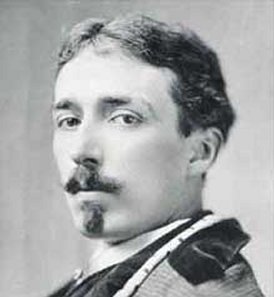
James Carroll Beckwith was an American landscape, portrait and genre painter whose Naturalist style led to his recognition in the late nineteenth and very early twentieth century as a respected figure in American art.
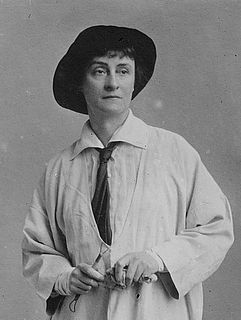
Janet Scudder, born Netta Deweze Frazee Scudder, was an American sculptor and painter from Terre Haute, Indiana, who is best known for her memorial sculptures, bas-relief portraiture, and portrait medallions, as well as her garden sculptures and fountains. Her first major commission was the design for the seal of the New York Bar Association around 1896. Scudder's Frog Fountain (1901) led to the series of sculptures and fountains for which she is best known. Later commissions included a Congressional Gold Medal honoring Domício da Gama and a commemorative medal for Indiana's centennial in 1916. Scudder also displayed her work at numerous national and international exhibitions in the United States and in Europe from the late 1890s to the late 1930s. Scudder's autobiography, Modeling My Life, was published in 1925.

Isidore Konti was a Vienna-born sculptor. He began formal art studies at the age of 16 when he entered the Imperial Academy in Vienna, where he studied under Edmund von Hellmer. In 1886, he won a scholarship that allowed him to study in Rome for two years. While there he developed a love of Renaissance art that was to affect the nature of his mature sculpture. Upon returning to Austria, Konti worked as an architectural modeler.
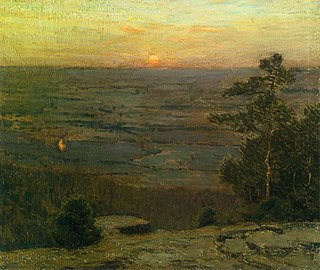
Charles Warren Eaton (1857–1937) was an American artist best known for his tonalist landscapes. He earned the nickname "the pine tree painter" for his numerous depictions of Eastern White Pine trees.
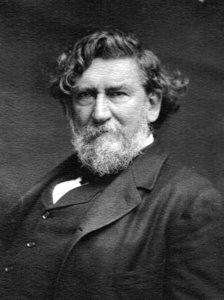
Thomas Satterwhite Noble was an American painter as well as the first head of the McMicken School of Design in Cincinnati, Ohio.
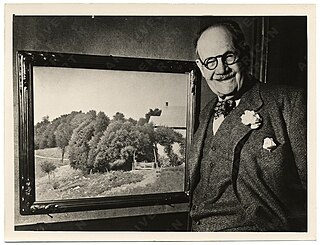
Frank Vincent DuMond was one of the most influential teacher-painters in 20th-century America. He was an illustrator and American Impressionist painter of portraits and landscapes, and a prominent teacher who instructed thousands of art students throughout a career spanning over fifty years.

Otto Stark was an American Impressionist painter muralist, commercial artist, printmaker, and illustrator from Indianapolis, Indiana, who is best known as one of the five Hoosier Group artists. Stark's work clearly showed the influence of Impressionism, and he often featured children in his work. To provide a sufficient income for his family, Stark worked full time as supervisor of art at Emmerich Manual High School in Indianapolis from 1899 to his retirement in 1919, and as part-time art instructor on the faculty of the John Herron Art Institute from 1905 to 1919. Stark frequently exhibited his paintings at international, national, regional, and local exhibitions, including the Paris Salon of 1886 and 1887; the Five Hoosier Painters exhibition (1894) in Chicago, Illinois; the Trans-Mississippi Exposition (1898) in Omaha, Nebraska; the Louisiana Purchase Exposition (1904) in Saint Louis, Missouri; and international expositions (1910) in Buenos Aires, Argentina, and Santiago, Chile. He also supervised the Indiana exhibition at the Panama-Pacific International Exhibition (1915) in San Francisco, California. Stark remained an active artist and member of the Indianapolis arts community until his death in 1926.

Lydia Field Emmet was an American artist best known for her work as a portraitist. She studied with, among others, prominent artists such as William Merritt Chase, Harry Siddons Mowbray, Kenyon Cox and Tony Robert-Fleury. Emmet exhibited widely during her career, and her paintings can now be found hanging in the White House, and many prestigious art galleries, including the Metropolitan Museum of Art.

Stephen Arnold Douglas Volk was an American portrait and figure painter, muralist, and educator. He taught at the Cooper Union, the Art Students League of New York, and was one of the founders of the Minneapolis School of Fine Arts. He and his wife Marion established a summer artist colony in western Maine.

Colin Campbell Cooper, Jr. was an American Impressionist painter, perhaps most renowned for his architectural paintings, especially of skyscrapers in New York City, Philadelphia, and Chicago. An avid traveler, he was also known for his paintings of European and Asian landmarks, as well as natural landscapes, portraits, florals, and interiors. In addition to being a painter, he was also a teacher and writer. His first wife, Emma Lampert Cooper, was also a highly regarded painter.
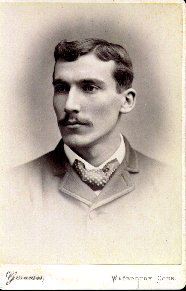
Henry Golden Dearth was a distinguished American painter who studied in Paris and continued to spend his summers in France painting in the Normandy region. He would return to New York in winter, and became known for his moody paintings of the Long Island area. Around 1912, Dearth changed his artistic style, and began to include portrait and still life pieces as well as his paintings of rock pools created mainly in Brittany. A winner of several career medals and the Webb prize in 1893, Dearth died suddenly in 1918 aged 53 and was survived by a wife and daughter.
Thomas Bigelow Craig (1849–1924) was an American landscape painter from Philadelphia, Pennsylvania. He is known for his paintings depicting cows in summer environments. Craig's landscapes often featured meadows and streams. The animals in his earlier paintings did not take up a large part of the canvas compared to the surrounding landscapes; in his later paintings, however, the animals were drawn larger and became more important than the landscapes around them.
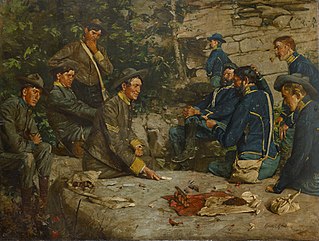
William Gilbert Gaul (1855–1919) was a late 19th and early 20th century American painter and illustrator of military subjects ranging from the American Civil War to World War I, as well as American Western vistas and scenes.

John J. Boyle was an American sculptor active in Philadelphia in the last decades of the 19th century, known for his large-scale figurative bronzes in public settings, and, particularly, his portraiture of Native Americans.

Oliver Dennett Grover, was an American landscape and mural painter, the son of lawyer Alonzo Jackson Grover.

Lydia Amanda Brewster Sewell was a 19th-century American painter of portraits and genre scenes. Lydia Amanda Brewster studied art in the United States and in Paris before marrying her husband, fellow artist Robert Van Vorst Sewell. She won a bronze medal for her mural Arcadia at The World's Columbian Exposition in 1893. She continued to win medals at expositions and was the first woman to win a major prize at the National Academy of Design, where she was made an Associate Academian in 1903. She was vice president of the Woman's Art Club of New York by 1906. Her works are in several public collections.
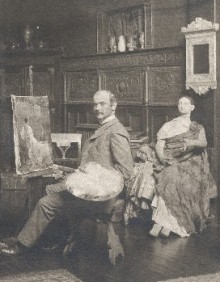
Francis Coates Jones (1857–1932) was an American painter from a wealthy Baltimore family who studied in Europe under painters such as Bouguereau. He is known for his paintings of women at ease in richly decorated interiors or in flower-filled gardens.

Walter Elmer Schofield was an American Impressionist landscape and marine painter. Although he never lived in New Hope or Bucks County, Schofield is regarded as one of the Pennsylvania Impressionists.